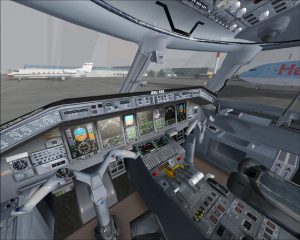Monday Accidents & Lessons Learned: Who’s in Charge?

An ERJ-145 crew failed to detect a change in its vertical navigation mode during descent. When it was eventually discovered, corrective action was taken, but large deviations from the desired flight path may have already compromised safety.
“This event occurred while being vectored for a visual approach. The First Officer (FO) was the Pilot Flying and I was Pilot Monitoring. ATC had given us a heading to fly and a clearance to descend to 3,000 feet. 3,000 was entered into the altitude preselect, was confirmed by both pilots, and a descent was initiated. At about this time, we were also instructed to maintain 180 knots. Sometime later, I noticed that our speed had begun to bleed off considerably, approximately 20 knots, and was still decaying. I immediately grabbed the thrust levers and increased power, attempting to regain our airspeed. At about this time, it was noticed that the preselected altitude had never captured and that the Flight Mode Annunciator (FMA) had entered into PITCH MODE at some point. It became apparent that after the aircraft had started its descent, the altitude preselect (ASEL) mode had changed to pitch and was never noticed by either pilot. Instead of descending, the aircraft had entered a climb at some point, and this was not noticed until an appreciable amount of airspeed decay had occurred. At the time that this event was noticed, the aircraft was approximately 900 feet above its assigned altitude. Shortly after corrective action was begun, ATC queried us about our climbing instead of descending. We replied that we were reversing the climb. The aircraft returned to its assigned altitude, and a visual approach was completed without any further issues.
“[We experienced a] large decrease in indicated airspeed. The event occurred because neither pilot noticed the Flight Mode Annunciator (FMA) entering PITCH MODE. Thrust was added, and then the climb was reversed in order to descend back to our assigned altitude. Both pilots need to reaffirm that their primary duty is to fly and monitor the aircraft at all times, starting with the basics of heading, altitude, airspeed, and performance.”
We encourage you to use the TapRooT® System to find and fix problems. Attend one of our courses. We offer a basic 2-Day Course and an advanced 5-Day Course. You may also contact us about having a course at your site.We encourage you to use the TapRooT® System to find and fix problems. Attend one of our courses. We offer a basic 2-Day Course and an advanced 5-Day Course. You may also contact us about having a course at your site.



